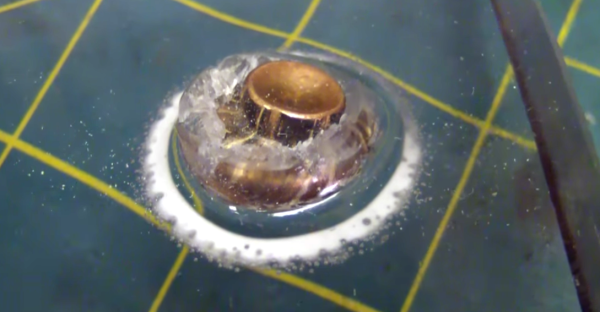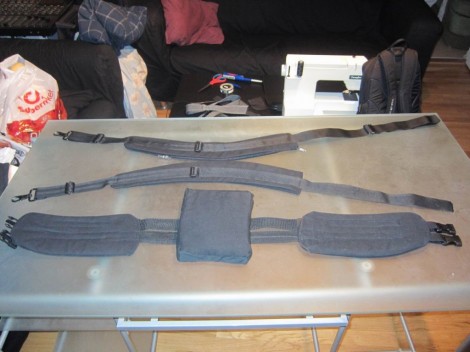Hackers tend to stash away lots of stuff that seems useless, right up until it saves the day. This includes not just junk in our parts bin but brains full of tips and tricks for the shop. With that in mind, you might want to file away a few of the tips in [AvE]’s video of how he made bulletproof glass for a rainy day.
By his own admission, [AvE]’s video is a little disjointed, and the topic of the bulletproof glass is only covered at the beginning and again briefly at the end. Most of the video concerns the machining of a stout stand for the glass for testing on the range. There’s plenty to learn from the machining, though, and [AvE] is always good for a laugh, so the video is worth a watch. The bulletproof glass itself is part of a long-term project that [AvE] is releasing first to his Patreon patrons – a ridiculously over-built flashlight dubbed “The Midnight Sun”. His first two tries at laminating the Lexan discs were less that optimal, as both brands of cyanoacrylate glue clouded the polycarbonate. Stay tuned to the end of the video for the secret of welding Lexan together into an optically clear sandwich.
As for testing under fire, [AvE] sent the rig off to buddy [TAOFLEDERMAUS] for the hot lead treatment. The video after the break shows that the glass is indeed bulletproof, as long as the bullet in question is a .22LR. Not so much for the 9mm, though – that was a clear punch-through. Still, pretty impressive performance for homebrew.
If you want something that can stop an arrow, there’s a lot of materials science to be learned from the ancient Greeks.
Continue reading “Homemade Bulletproof Glass, Built And Tested”

















